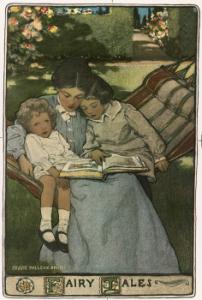 If you haven’t already published a juvenile book with Amazon’s Kindle Direct Publishing (KDP) you don’t know they announced a big change on June 2. In a letter to all their children’s book publishers they wrote:
If you haven’t already published a juvenile book with Amazon’s Kindle Direct Publishing (KDP) you don’t know they announced a big change on June 2. In a letter to all their children’s book publishers they wrote:
“You can now set age and grade categorization refinements to help readers discover your books.”
Okay maybe this doesn’t sound news worthy to some of you, but every independent children’s book author cheered wildly. Or at least they should have if they understand anything about marketing. Before this announcement age and grade classifications (in all but a few cases) were restricted to the big named publishers. Now Indies can compete on an equal level, getting their books onto those all important children’s book recommendation lists, and it may be a game changer. This is Amazon handing out the marketing equivalent of a golden ticket. It immediately gives authors the opportunity to position their books perfectly, maximizing their chances of finding buyers.
There is a downside. Unless they already know a lot about education and child development, some authors may have no clue where their book falls in the Amazon brackets.
The categories are:
Baby to age 2 – Board books
Ages 3-5/Preschool – Picture books
Ages 6-8/Kindergarten-2nd grade – Early level readers; first chapter books
Ages 9-11/3rd-5th grade – Middle Grade chapter books
Ages 12-14/6th-8th grade – Teen and Young Adult chapter books (mainly aimed at middle school readers)
Ages 15-18/9th-12th grade – Teen and Young Adult chapter books (mainly aimed at high school readers)
These categories may sound like arbitrary distinctions, we all know readers who let personal preference dictate their selections more so than age or grade. However, that’s not how the book industry sees things, and most educators and librarians share that view. Educational buyers are traditionally a big portion of the children’s book buying market and are professional groups with little spare time, small budgets and high user demands. Every bit of information the author can provide these circumspect buyers will help them make good decisions. Plus once educators know and love your books they tend to be solid repeat buyers for years to come.
Understanding what type of information educators need to make informed selections is the first step toward building a lasting relationship. These sophisticated buyers must rely on a number of variables when making purchases, but one important piece of information is a standardized readability score. These are scores generated by specialized software that uses a mathematical formula to analyze written language and then awards it a number to represent the necessary skill level needed to read that book. The skill number loosely corresponds to a grade level. More specifically to the grade when the “average” student might attain that level of proficiency. This type of software is not foolproof, but it is a great place for buyers to start searching from.
One of the most common scores in traditionally published books is the Lexile system which is often printed on the back cover of popular children’s books. However, there are a number of other readability score systems. Remember, these assessment tools look at the language from the standpoint of readability, not content. Some children may read at a higher grade level, but lack the reading stamina to tackle a longer book, or the maturity for every subject.
You can find a number of readability calculators available for free over the internet or you can use the one built into MS Word. I ran this post through an index and generated this report:
Reading Ease
A higher score indicates easier readability; scores usually range between 0 and 100.
Flesch-Kincaid Reading Ease 61.3
Grade Levels
A grade level (based on the USA education system) is equivalent to the number of years of education a person has had. Scores over 22 should generally be taken to mean graduate level text.
Flesch-Kincaid Grade Level 8.7
Gunning-Fog Score 11.3
Coleman-Liau Index 12
SMOG Index 8.4
Automated Readability Index 8.9
Average Grade Level 9.9
Understanding the value of reader evaluation tools is important for all authors, even those who want to seek representation and a “traditional” book deal. While finishing up this post I happened to catch an agent on Twitter explaining in heated detail that a book cannot be MA and YA at the same time. And that by pitching it to her as such, the writer was proving they didn’t understand the market.
Don’t be that writer. Do your research, study the markets and use reader tools to help you get it right.
I understand many writers hate guidelines; they prefer to write their book their way. I respect that, but you have to think about the reader. There is nothing more frustrating to a child then getting a great book they can’t read comfortably. They need to find books that help them achieve a careful balance, ones that leave them with a feeling of accomplishment, not frustration. Placing your book in the right reading level category is the final step toward making a child’s reading experience with your book a magical one. And isn’t that why we all write for children in the first place?




